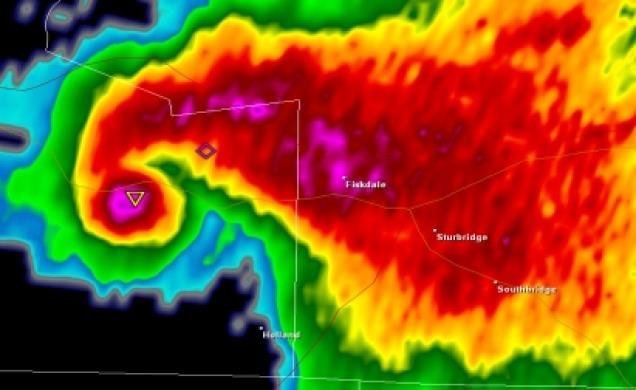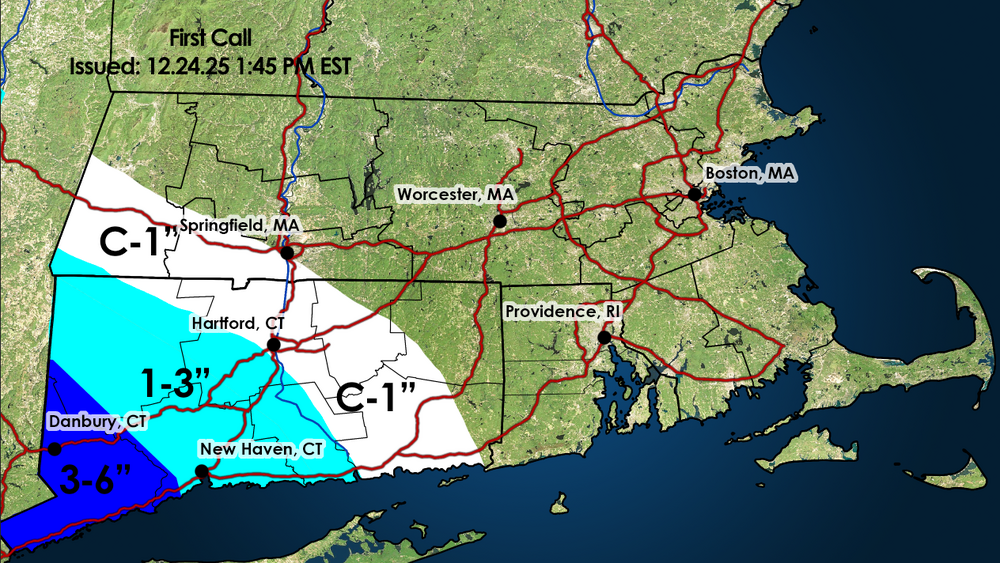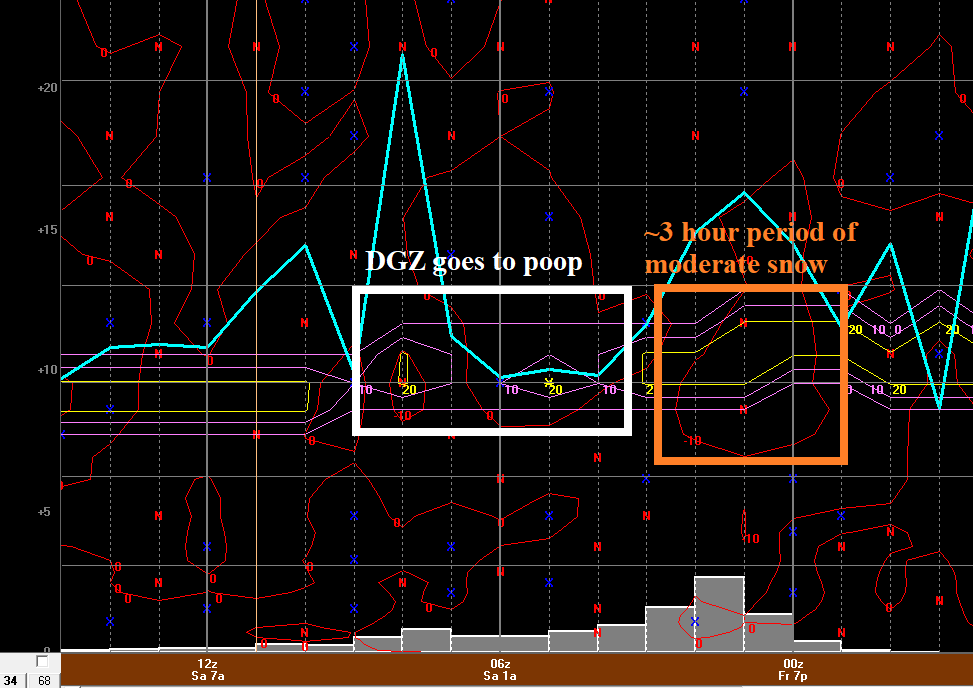-
Posts
78,487 -
Joined
-
Last visited
Content Type
Profiles
Blogs
Forums
American Weather
Media Demo
Store
Gallery
Everything posted by weatherwiz
-

26th-27th event, coming at us like a wounded duck.
weatherwiz replied to Go Kart Mozart's topic in New England
Just have to hope we remain with positive trends at 12z -

26th-27th event, coming at us like a wounded duck.
weatherwiz replied to Go Kart Mozart's topic in New England
Please NAM verify…please -

26th-27th event, coming at us like a wounded duck.
weatherwiz replied to Go Kart Mozart's topic in New England
Kind of seems like dry air and some subsidence would be an issue on the NAM. This would be a verification mess. You would probably get some spots getting 4-6” and then some spots barely getting 1-2”…and probably within close proximity. But can’t really buy this yet or take any value from it. If the GFS/Euro hold serve this can probably be tossed. Wonder where RRFS will go -

26th-27th event, coming at us like a wounded duck.
weatherwiz replied to Go Kart Mozart's topic in New England
Sucks sounding on cod don’t work but the precip looks kinda all blotchy. This is so weird -

26th-27th event, coming at us like a wounded duck.
weatherwiz replied to Go Kart Mozart's topic in New England
Well…lol -

26th-27th event, coming at us like a wounded duck.
weatherwiz replied to Go Kart Mozart's topic in New England
I wouldn’t be surprised if we saw a tick back south. If anything, I am hoping the mesos start improving 0z otherwise that could be a big flag concern -

26th-27th event, coming at us like a wounded duck.
weatherwiz replied to Go Kart Mozart's topic in New England
Yup…you can see this poking around bufkit. Under the lift, ratios could exceed 15:1. Well away from the lift quite a bit below 10:1 -

26th-27th event, coming at us like a wounded duck.
weatherwiz replied to Go Kart Mozart's topic in New England
Pretty hefty 3 hr bump for sure. probably some thunder in there too...a bit of a MAUL -

26th-27th event, coming at us like a wounded duck.
weatherwiz replied to Go Kart Mozart's topic in New England
The one I remember best was November 2018. NJ into SW CT got absolutely crushed...that was with a SWFE I think but that was wild. I think Newark got something like 6-7" of snow. What made this event worse was it occurred during evening rush hour. -

26th-27th event, coming at us like a wounded duck.
weatherwiz replied to Go Kart Mozart's topic in New England
I was just looking at the RRFS...that and the 3km are like what event lol. I guess thankfully we are a bit out of the time range for the mesos but I think they should yield some degree of concern. They both sort of hint at the potential for basically a narrow band of precip and that is it. I'd have to hedge them being underdone in terms of precipitation but they may have the right idea on the narrowness of the heavy snow. -

26th-27th event, coming at us like a wounded duck.
weatherwiz replied to Go Kart Mozart's topic in New England
This is going to be a nightmare right up until go time -

26th-27th event, coming at us like a wounded duck.
weatherwiz replied to Go Kart Mozart's topic in New England
Phily could actually get porked with sleet lol. that mlvl dry push may seriously screw with things. I have no clue what to take on it. I feel like it won't be an issue because it will be trailing the precip shield but I suppose some of that drier air could get entrained and it screws the whole process up. Maybe that's what the 3km is doing? Kind of hard to tell...not much for products available on the 3km -

26th-27th event, coming at us like a wounded duck.
weatherwiz replied to Go Kart Mozart's topic in New England
This might be a case where the snow comes in like a wall, falls 2"+ per hour for 2-2.5 hours then quickly starts to shut off. -

26th-27th event, coming at us like a wounded duck.
weatherwiz replied to Go Kart Mozart's topic in New England
wow that is ugly...looks more like convective precip lol -

26th-27th event, coming at us like a wounded duck.
weatherwiz replied to Go Kart Mozart's topic in New England
Nice thump on the NAM...in and out though. -

26th-27th event, coming at us like a wounded duck.
weatherwiz replied to Go Kart Mozart's topic in New England
4-8" is a good call right now. It reflects some of the uncertainty which exists and allows for some adjusting once the uncertainties are better known. -

26th-27th event, coming at us like a wounded duck.
weatherwiz replied to Go Kart Mozart's topic in New England
Initial thoughts: Greatest uncertainty is the farther northeast into the state you go. The greatest warm air advection is going to occur well to our southwest, from PA into NJ and likely clipping southwest Fairfield County. Where this occurs is critical because this is where the heaviest banding of snow will occur along with the heaviest rates and highest ratios. I think there is room for some higher totals in southwest CT (possibly in the 6-8" range) but there are questions about drier air advecting in aloft and drying out the DGZ. This could result in a solid 2-3 hour window of moderate-to-heavy snow with snow quickly decreasing in intensity and snow growth become poor. This would also occur as the WAA diminishes. It is also very possible the mesos are throwing us caution flags which need to be considered as many of the mesos essentially have one heavy band, with little outside of this band. That would fit the mold of this setup well as much of the forcing is tied into the strong WAA. Might have time to update this tomorrow. Depends on what I have going on for Christmas after work. -

26th-27th event, coming at us like a wounded duck.
weatherwiz replied to Go Kart Mozart's topic in New England
I should add the drier air would probably just hold back accumulation potential. So say if it looked good for 5-6-7"...it may hold it down to more in the 3-5" range. This is BDR. Good solid ~3 hour window for moderate snow then the DGZ goes to crap as drier air works in. I just think this needs to be considered when forecasting the ceiling on this. -

26th-27th event, coming at us like a wounded duck.
weatherwiz replied to Go Kart Mozart's topic in New England
well I think its still an encouraging sign for places basically along a line say from Danbury to Bridgeport to Southbury-Oxford-Seymour. But the challenge with this is this will be a nowcast situation because ultimately its how the storm evolves which will dictate where the heaviest banding occurs. I am not as nervous about the dry air anymore...the dry air will work in behind the slug of precipitation and will probably help to enhance rates within the precipitation shield. What I would be most nervous about is where the strongest push of WAA occurrs. Given how far SW models have that it may be difficult to even get more than 2-3" back outside of southwestern Fairfield County. We're going to have to rely on mesos for this one I think and just hope the models can pick up on it -

26th-27th event, coming at us like a wounded duck.
weatherwiz replied to Go Kart Mozart's topic in New England
Encouraging to see, but meanwhile Waterbury was not so great...probably 1-2". But this just goes to show that there will be an extreme cutoff with this. A quick look of the euro looks solid for SW CT too. It's basically going to be what the northeast extent of accumulating snow is -

26th-27th event, coming at us like a wounded duck.
weatherwiz replied to Go Kart Mozart's topic in New England
12z GFS bufkit looks good for anywhere from 2-4/3-5" for BDR. Decent front end thump before dry air works in aloft. -

December 2025 regional war/obs/disco thread
weatherwiz replied to Torch Tiger's topic in New England
I wonder if the airmass can be traced back towards Siberia. -

26th-27th event, coming at us like a wounded duck.
weatherwiz replied to Go Kart Mozart's topic in New England
Agreed. I haven't dug into ratios yet. I was thinking ratios should be great given how cold we are, but that warming aloft from just above 850 to like 725 might play some sort of factor. But what could help even into central CT is higher ratios to yield potential for an inch. I love these type of storms because there is so much going on in the mesoscale and storm processes that play such a large role. I really wish though the strongest WAA was farther northwest and I also hate how (again) the WAA weakens with time. This is going to net some negative busts somewhere, just a question as to where. -

26th-27th event, coming at us like a wounded duck.
weatherwiz replied to Go Kart Mozart's topic in New England
Yeah GFS has not budged much at all which is a great sign and probably is leading the way with this. Going to wait on the Euro then probably put a forecast together. I wouldn't even be surprised to see some thundersnow to our southwest. The ceiling for totals is going to be interesting...going to have to factor in speed and also consider that dry punch. But thinking about it more, I think that dry punch works to enhance snowfall rates and yield potential for thundersnow. -

26th-27th event, coming at us like a wounded duck.
weatherwiz replied to Go Kart Mozart's topic in New England
GFS still looks good for SW CT. A solid 2-3 hours of heavy snow probably...actually even a subtle inv trough signature for N NJ, SE NY, and SW CT









